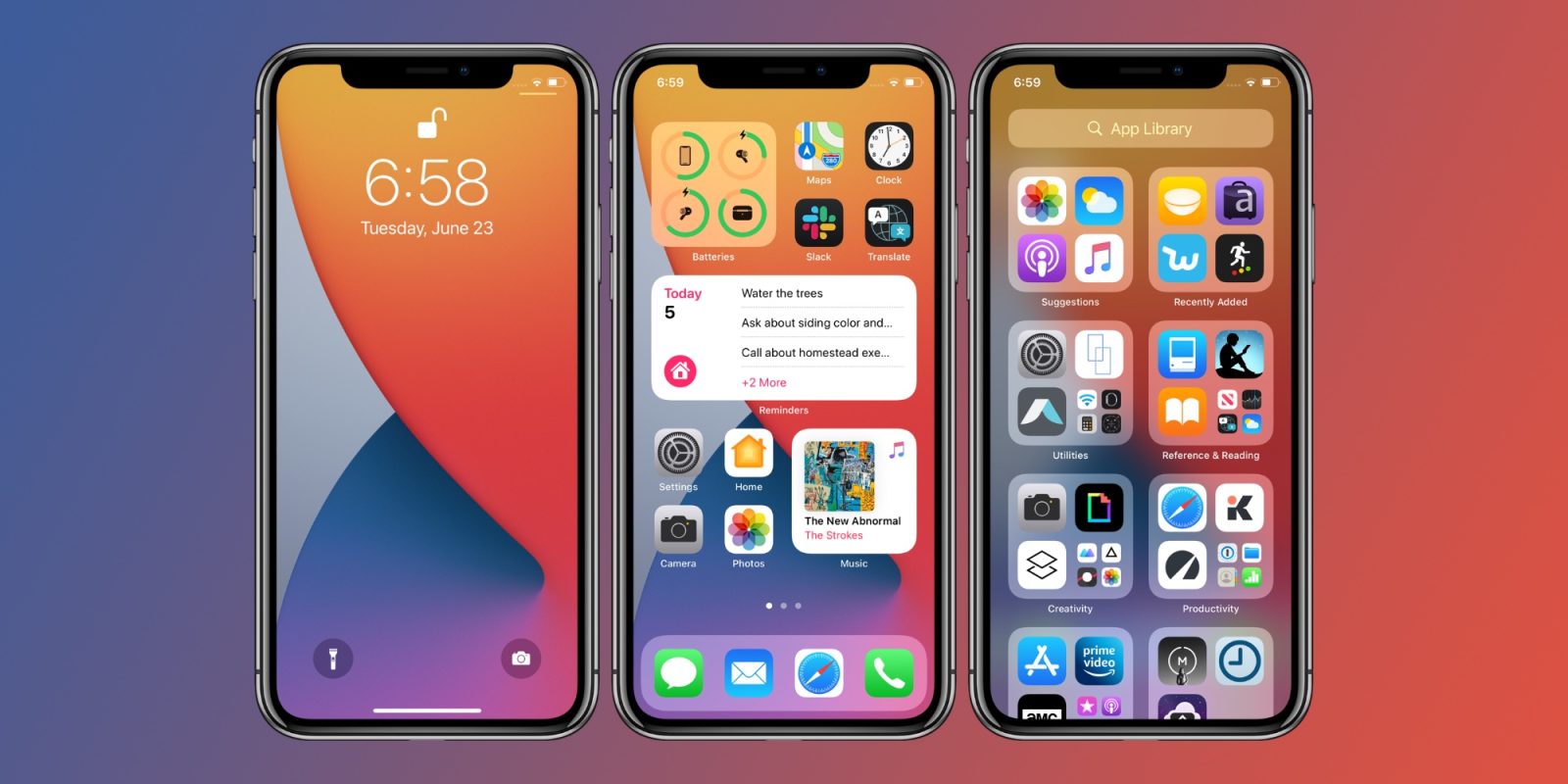Here we bring you all the news that will come with iOS 14, the new version of Apple’s mobile operating system. Your iPhone will receive some important aesthetic changes on its main screen, giving you more freedom when designing a look with more information and fewer applications that you don’t need.
iOS 14 features
We are now going to tell you what are the main novelties of iOS 14, the new version of Apple‘s mobile operating system. The most notable thing above all is the customization of the home screen, but there are also other details that change and that may interest you.
- App drawer: From now on, iOS will allow you to make main screen invisible by hiding those apps byactivating an app drawer called App Library. This is not like the Android one with a list of apps, but all are automatically arranged in folders with categories.
- When you install an app it goes to the drawer: With iOS 14, if you have the application drawer activated, installed apps will go to the drawer automatically and there you can configure the apps directly.
- Widgets are here: Another major change in iOS is the new widget system. It is implemented. At the earlier versions main page were limited to the 2×2 or 4×2 configurations. With new widgets the main screen will be configurable.
- Picture in picture: Another interface change is the arrival of picture in picture mode. This mode means that if you are watching a video in an app and go to the desktop or another app, the video continues to play in a small window it will always be visible.
- Siri is compact: When you say Hey Siri, it no longer covers up the entire screen. Instead, a sphere appears at the bottomoccupying a very little space.
- Siri translates better: The interaction between Siri and the translation app has been improved.
- Siri records and sends audio messages: Another new little but useful assistant feature.
- App Clips: It is a function that makes it easier to find and obtain apps that the user may need depending on the location and context.
- Changing default apps: More freedom for iOS and iPadOS users, now you can change the default apps for mail and browser.
- Sleep management is here: This is a new function for the native Health application, which can now manage your sleep hours using the Apple Watch. Health Checklist is also added, a centralized place for the management of health and safety benefits, such as medical data, emergency contact, etc.
- Improvements in the Messages app: Now you can pin conversations to have them always accessible, silence notifications of the conversations you want, they also added new animations and Memojis with new gestures and accessories.
- Improvements in the Maps app: Bicycle routes and data on electric car charging points are added. Of course, these map improvements are not currently available in all countries.
- Improvements in the Home app: Home automation and the management of the IoT are easier now with new automation suggestions in the Control Center. Compatible door openers and video cameras are also allowed to use facial recognition to identify contacts.
- Your iPhone as a car key: CarKey is a new system that allows you to use the iPhone as a key to unlock the car using the U1 chip. It will be available in the Wallet, and it will allow you to invite other users to use the key.
- Call notification resize on iPad: The incoming call notification has been redesigned to be smaller and does not occupy the entire screen.
- Improvements in iPad searches: The search tool allows you to search anything you want without having to leave the active app. Like the current one, it will allow you to find contacts, websites, documents, etc.
- Improvements in Apple Pencil: The Scribble app will allow you to write freehand in any text field, or select handwritten text to copy and paste.

- New Apple iPad Air introduced: price, features, release date
- Apple Watch SE is announced: specs, price and release date
- Apple launched Watch Series 6: price, specs and release date
iOS 14: Compatible devices
Here is the complete list of devices that will be compatible with iOS 14. If your iPhone is on the list, it means that you can update. In summary all devices after iPhone 6s are supported. Here is the list:
- iPhone 11 Pro Max
- iPhone 11 Pro
- iPhone 11
- iPhone XS Max
- iPhone XS
- iPhone XR
- iPhone X
- iPhone 8 Plus
- iPhone 8
- iPhone 7 Plus
- iPhone 7
- iPhone 6s Plus
- iPhone 6s
- iPhone SE (2nd generation)
- iPhone SE (1st generation)
- iPod touch (7th generation)
And now it’s time to mention the devices compatible with iPad OS 14. Again, if your iPad model is not on the list, you will not receive the new version of the operating system.
- iPad Pro 12.9 “(4th generation)
- iPad Pro 11 “(2nd generation)
- iPad Pro 12.9 “(3rd generation)
- iPad Pro 11 “(1st generation)
- iPad Pro 12.9 “(2nd generation)
- iPad Pro 12.9 “(1st generation)
- iPad Pro 10.5 “
- iPad Pro 9.7 “
- iPad (7th generation)
- iPad (6th generation)
- iPad (5th generation)
- iPad mini (5th generation)
- iPad mini 4
- iPad Air (3rd generation)
- iPad Air 2
How to install iOS 14?
Installing the new version of iOS is still as simple as ever. You just have to enter the settings, and click on the General section. There, click on the Software update option and your device will start looking for new versions of iOS or iPadOS.
But you don’t have to worry too much either, because updates will also be notified automatically as iOS checks for new versions every day.





